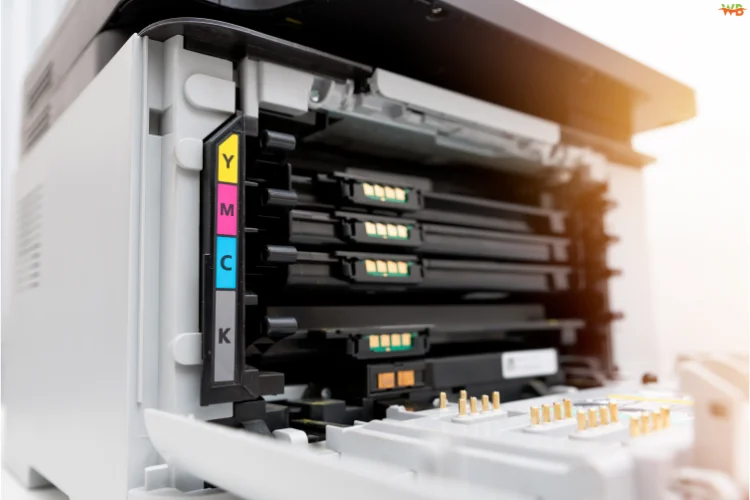
In the world of digital preservation, ensuring that scanned documents meet high-quality standards is essential. That’s where FADGI (Federal Agencies Digital Guidelines Initiative) compliance comes into play. Whether you’re working with government records, historical documents, or high-value archives, understanding FADGI is crucial for maintaining accuracy, consistency, and long-term usability.
Be Confident With Compliance
FADGI establishes a set of star ratings to measure the quality of digitized documents, much like a restaurant’s Michelin stars. These ratings ensure that scans meet specific criteria for resolution, color accuracy, and image consistency. Organizations that need to comply with FADGI include libraries, museums, government agencies, and research institutions.
By adhering to FADGI guidelines, businesses and agencies can confidently preserve their digital records, ensuring they are accessible and of the highest quality. Non-compliance can result in poor-quality digitization, making it difficult to retrieve or analyze important information in the future.
Three-Star FADGI Compliance

One of the most commonly sought-after levels of compliance is Three-Star FADGI compliance. This rating strikes a balance between affordability and the high level of accuracy required for official records and historical documents. It ensures that digitized materials maintain their integrity while also meeting professional standards for long-term preservation.
For organizations looking to enhance their document digitization process, investing in the right scanning equipment is key. Choosing a scanner that meets Three-Star FADGI compliance ensures that you can confidently digitize documents without worrying about losing detail or accuracy.
Beyond scanning solutions, having the right peripherals can improve workflow efficiency. For professionals who need an ultra-light display for document reviews or on-the-go productivity, the lightest portable monitor can enhance convenience. Similarly, when printing digital documents is necessary, a high-performance color laser printer ensures that images and text remain crisp and professional.
Conclusion on FADGI Compliance
Understanding and implementing FADGI standards is essential for organizations aiming for high-quality digital preservation. By ensuring compliance, businesses and institutions can protect their valuable archives and enhance accessibility for years to come. Whether you’re digitizing documents for government use, historical preservation, or corporate records, meeting Three-Star FADGI compliance ensures reliability and long-term usability.
Invest in the right tools, from FADGI-compliant scanners to the lightest portable monitor and a color laser printer, to streamline your workflow and ensure your digitization process is up to the highest standards.
FAQs
1. Why is FADGI compliance important for businesses, and how does it impact digital records?
- FADGI compliance is crucial for businesses that handle sensitive or official documents, as it guarantees high-quality digitization. Compliance ensures that scanned records maintain their clarity, detail, and color accuracy, making them more reliable for future reference. It also helps organizations avoid issues like poor readability, missing details, or distorted images, which could impact data retrieval and regulatory adherence. By following these guidelines, businesses can enhance their document management processes and improve overall efficiency in record-keeping.
2. Does FADGI compliance apply to all types of scanned documents, or is it only for government use?
- While FADGI standards were originally developed for government agencies, they are now widely used in various industries. Any organization that relies on digitized documents for long-term storage, including financial institutions, healthcare providers, and legal firms, can benefit from compliance. The standards ensure consistency in scanning quality, which is crucial for maintaining the integrity of important records, whether they are contracts, medical files, blueprints, or research documents. Businesses that prioritize high-quality digital preservation should consider adopting FADGI standards regardless of industry.
3. How can I verify if my scanner meets FADGI standards, and what should I look for?
- To determine if a scanner meets FADGI standards, start by checking the product specifications provided by the manufacturer. Many high-end scanners will indicate their compliance with FADGI star ratings. Additionally, you can conduct test scans and compare the results against image quality benchmarks, which assess factors like resolution, color accuracy, and contrast levels. Some organizations also use third-party verification tools or software that analyze scanned images to confirm compliance with guidelines. Ensuring your scanner meets at least a Three-Star rating will help maintain reliable document quality.
4. What are the risks of using non-FADGI-compliant scanning equipment for digitization?
- Using non-FADGI-compliant scanners can lead to various issues, including poor image resolution, incorrect color reproduction, and loss of fine details in scanned documents. Over time, low-quality digitization can make it difficult to retrieve, analyze, or legally validate records, especially for organizations dealing with historical archives or regulatory documentation. Non-compliance may also result in additional costs, as businesses might need to rescan and enhance digital files to meet professional standards. Investing in FADGI-compliant scanners from the start can help avoid these risks and ensure long-term reliability.
5. Can FADGI compliance improve OCR (Optical Character Recognition) accuracy, and how does it benefit digital workflows?
- Yes, FADGI compliance plays a significant role in enhancing OCR accuracy. OCR technology relies on clear and high-quality scanned images to accurately recognize and extract text from documents. When scans meet high-quality standards, they produce sharper and more readable text, reducing errors in character recognition. This leads to improved searchability, better document indexing, and increased efficiency in automated data processing. Businesses that use OCR for archiving, legal documentation, or automated workflows will see substantial benefits from FADGI-compliant digitization, as it minimizes errors and ensures more precise text extraction.

Ton Roobprom is an experienced writer focused on practical advice across technology, business, travel, beauty, lifestyle, and home improvements. He specializes in distilling complex subjects into clear, actionable insights to help you enhance your daily life.
Discover more from Wellbeing Junction
Subscribe to get the latest posts sent to your email.

